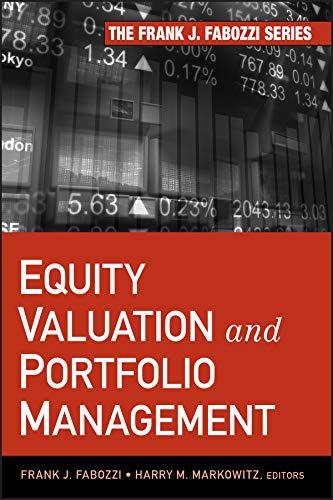Consider the data in the table below and answer the following questions: Utility Score Portfolio L Utility Score Portfolio M Utility Score Portfolio H Investor Risk Aversion (A) Er) =.07: =.05 E(r)=.09: O= E(r)= 13: o = 2 13-4x2x.22 =.0900 107 _x2x.052 = .0675.095x2x. P = 0800 x4x. 1 = -0700 13x4x.22 - 0500 1. The three risk aversion coefficients in the first column represent investors X, Y and Z. Which risky portfolio maximizes the utility of each investor? Give an explanation for your answer. Assume now that all the three risky portfolios L, M, H are uncorrelated (correlation is zero). In such situation, the variance of a portfolio is given by the following formula: W,2* 0,2 + W22* 02? + W,2* 032 2. Find the utility of each investor for an investment in a portfolio that holds L, M and H in equal proportion. 3. Find the expected utility of each of the three investors, X, Y and Z who would invest in L. H. Min equal proportions. Assume that the investors would have separate utilities for each of the three portfolios, L, M and H. 4. Explain why the two utilities (found in point 2 and 3)are not equal for each investor. 5. For each investor take the difference between the utility at point 2 and point 3. Explain based on the risk aversion of each individual your result (why the differences have different magnitudes.) Assume now that the market risk premium is 5% and the risk free rate is 3% 6. For each investor find the alpha of the risky portfolio that maximized their utility in the table above. Assume that L, M and H have the same beta, 1.2 7. Find the investment in the risky portfolio formed by equal proportions in L, M and Hand the risk free rate that maximizes the utility of investor X (risk aversion 2.) Find the expected return, the standard deviation and the utility of this portfolio 3. Find the expected utility of each of the three investors, X, Y and Z who would invest in L. H. Min equal proportions. Assume that the investors would have separate utilities for each of the three portfolios, L, M and H. 4. Explain why the two utilities (found in point 2 and 3)are not equal for each investor. 5. For each investor take the difference between the utility at point 2 and point 3. Explain based on the risk aversion of each individual your result (why the differences have different magnitudes.) Assume now that the market risk premium is 5% and the risk free rate is 3% 6. For each investor find the alpha of the risky portfolio that maximized their utility in the table above. Assume that L, M and H have the same beta, 1.2 7. Find the investment in the risky portfolio formed by equal proportions in L, M and Hand the risk free rate that maximizes the utility of investor X (risk aversion 2.) Find the expected return, the standard deviation and the utility of this portfolio









